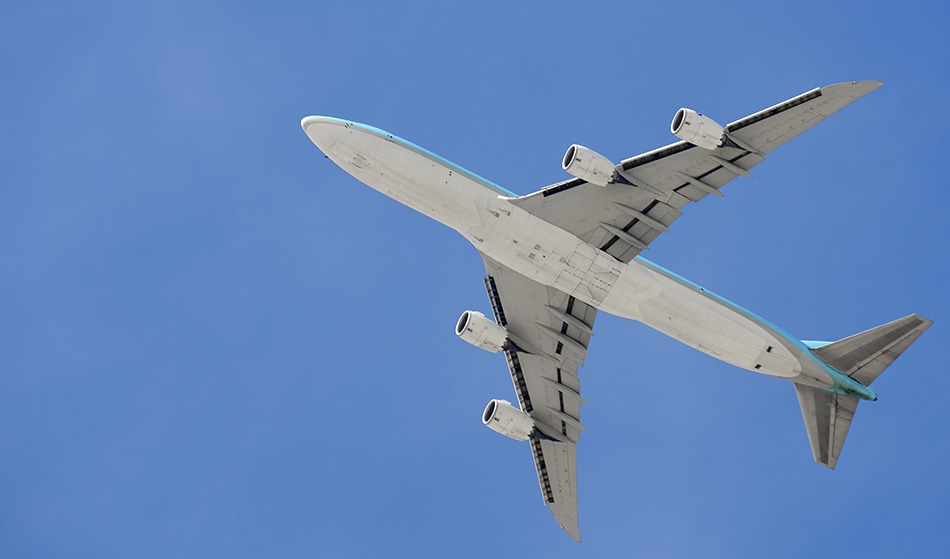The future of flight has been demonstrated by ST Aerospace, in the form of unmanned drone freighters. But the technological advancements don’t just impress in the air, as on the ground the engineers will be using cutting-edge augmented reality technology.
The current problem in the freight aerospace industry is a lack of pilots. By introducing autonomous planes that can fly themselves, it fixes the problem while saving money for the companies and extending potential working hours beyond human limits.
 pedrosala/shutterstock
pedrosala/shutterstock
How can a plane fly by itself? Artificial intelligence. This is overlaid on the current tech of autopilot and the flight management system and will be known as DroNet. It can fly an entire freight fleet with far fewer humans involved.
Initially, this smart system will be introduced to replace the co-pilot in freighter planes. So there will still be a pilot, initially at least. But now the co-pilot will be run by a single pilot based on the ground and monitoring the system. That means just one person can be co-piloting up to 12 single pilot planes at the same time.
DroNet is a drone-agnostic autonomous system that can handle swappable payloads. That means it will be able to fly for deliveries, security, surveillance and infrastructure inspection. The idea is to offer a fleet that runs over a small, typically urban area.
The experience required to offer services of this nature comes from the ST Aerospace contracts in defense, where it claims to be “one of the few MRO service providers in the world that has the depth in engineering expertise to develop end-to-end UAS solutions.” As a result, it also offers a commercial counter drone solution called Skyarcher, which uses streamers that are fired out to disable a drone’s propellers.
Back on the ground, ST Aerospace is working hard to refurbish and maintain fleets of aircraft also using advanced tech, with one large contract for the Republic of Singapore Air Force. As a result, it has developed an advanced system that allows engineers on the ground to work more effectively. This is thanks to its advances in the field of augmented reality.
ST Aerospace has pioneered a system called Smart MRO which aims to speed up plane turn-around times to help improve competitiveness. This uses additive manufacturing, augmented reality, data analytics and robotics. The most recent advancement, in augmented reality, lets engineers wear virtual reality glasses to help them carry out tasks more efficiently – like removing and refitting the axle nuts of an aircraft wheel, for example.
“We were already ahead of our time in the trend towards making the shop floor paperless,” said Lim Serh Ghee, president of ST Aero. He went on to say that the tablets used originally, were heavy and these have now been made lighter for engineers on the shop floor; allowing them to carry them on their person. This means they can be used for quick photographs of defects, for requesting raw materials immediately and for effectively communicating with management in real-time. The result is “enhanced safety as well as productivity,” says Lim.
The robot side of the company’s advancement, comes in the form of robotic arms which are used to polish engine blades. By introducing these bots on the floor the result has been a massive 50 percent reduction in time taken.
Parent company ST Engineering recently acquired Aethon, a leading provider of autonomous mobile robots for material transportation and delivery. This is best known for its TUG smart autonomous mobile robot which can deliver goods, materials, meals, medication and other supplies up to 635 kg and is used in more than 164 locations including hospitals, hotels and manufacturing plants.
Expect to see more use of robotics and artificially intelligent unmanned flights in the near future, as this technology develops further under huge investment from ST Engineering.
[SOURCE: https://www.ainonline.com/aviation-news/air-transport/2018-02-05/st-aerospace-shows-mro-and-uav-innovations-unmanned-freighter]
Disclaimer: The views expressed here are those of the author expressed in their private capacity and do not necessarily represent the views of AZoM.com Limited T/A AZoNetwork the owner and operator of this website. This disclaimer forms part of the Terms and conditions of use of this website.